Targeted therapy guided by single-cell transcriptomic analysis in drug-induced hypersensitivity syndrome: a case report
- PMID: 31959990
- PMCID: PMC7105105
- DOI: 10.1038/s41591-019-0733-7
Targeted therapy guided by single-cell transcriptomic analysis in drug-induced hypersensitivity syndrome: a case report
Abstract
Drug-induced hypersensitivity syndrome/drug reaction with eosinophilia and systemic symptoms (DiHS/DRESS) is a potentially fatal multiorgan inflammatory disease associated with herpesvirus reactivation and subsequent onset of autoimmune diseases1-4. Pathophysiology remains elusive and therapeutic options are limited. Cases refractory to corticosteroid therapy pose a clinical challenge1,5 and approximately 30% of patients with DiHS/DRESS develop complications, including infections and inflammatory and autoimmune diseases1,2,5. Progress in single-cell RNA sequencing (scRNA-seq) provides an opportunity to dissect human disease pathophysiology at unprecedented resolutions6, particularly in diseases lacking animal models, such as DiHS/DRESS. We performed scRNA-seq on skin and blood from a patient with refractory DiHS/DRESS, identifying the JAK-STAT signaling pathway as a potential target. We further showed that central memory CD4+ T cells were enriched with DNA from human herpesvirus 6b. Intervention via tofacitinib enabled disease control and tapering of other immunosuppressive agents. Tofacitinib, as well as antiviral agents, suppressed culprit-induced T cell proliferation in vitro, further supporting the roles of the JAK-STAT pathway and herpesviruses in mediating the adverse drug reaction. Thus, scRNA-seq analyses guided successful therapeutic intervention in the patient with refractory DiHS/DRESS. scRNA-seq may improve our understanding of complicated human disease pathophysiology and provide an alternative approach in personalized medicine.
Conflict of interest statement
Competing interests
All authors declare no competing interests.
Figures
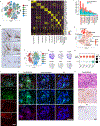


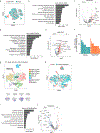

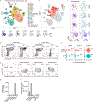
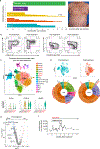
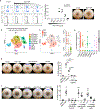
Comment in
-
A precision medicine-based strategy for a severe adverse drug reaction.Nat Med. 2020 Feb;26(2):167-168. doi: 10.1038/s41591-020-0756-0. Nat Med. 2020. PMID: 32015558 No abstract available.
References
-
- Duong TA, Valeyrie-Allanore L, Wolkenstein P & Chosidow O Severe cutaneous adverse reactions to drugs. Lancet 390, 1996–2011 (2017). - PubMed
-
- Kano Y, et al. Sequelae in 145 patients with drug-induced hypersensitivity syndrome/drug reaction with eosinophilia and systemic symptoms: survey conducted by the Asian Research Committee on Severe Cutaneous Adverse Reactions (ASCAR). J Dermatol 42, 276–282 (2015). - PubMed
-
- Husain Z, Reddy BY & Schwartz RA DRESS syndrome: Part I. Clinical perspectives. J Am Acad Dermatol 68, 693.e691–614; quiz 706–698 (2013). - PubMed
-
- Ushigome Y, Kano Y, Ishida T, Hirahara K & Shiohara T Short- and long-term outcomes of 34 patients with drug-induced hypersensitivity syndrome in a single institution. J Am Acad Dermatol 68, 721–728 (2013). - PubMed
-
- Husain Z, Reddy BY & Schwartz RA DRESS syndrome: Part II. Management and therapeutics. J Am Acad Dermatol 68, 709.e701–709; quiz 718–720 (2013). - PubMed
Publication types
MeSH terms
Substances
Grants and funding
LinkOut - more resources
Full Text Sources
Other Literature Sources
Molecular Biology Databases
Research Materials

